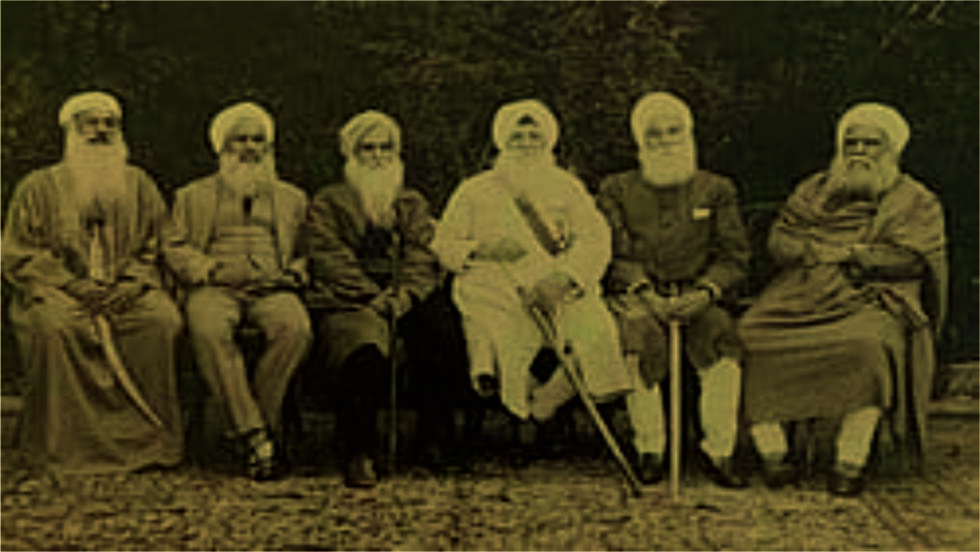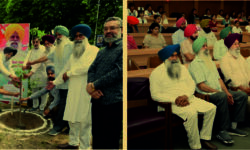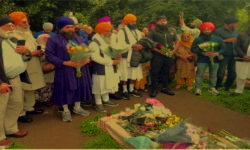
The Singh Sabha Movement has made a remarkable contribution to reviving Punjabi journalism and literature, and in propagating the philosophy of the Sikh Gurus.
When Banda Singh Bahadur began his armed struggle against Mughal rule in 1710, a group of brave Sikh warriors emerged to fight back. Within about fifty years, these warriors destroyed the Nawabi system and established Sikh Misls across Punjab. For the next forty years, the Sikh Misaldars consolidated their power, thus bringing an end to the Mughal monarchy in the region.
After centuries of foreign occupation by Turks, Afghans, and Mughals, Maharaja Ranjit Singh, the successor of the Shukarchakia Misl, captured Lahore in 1799 and established a large sovereign state in northwest India. His government, known as Sarkar-i-Khalsa, became renowned for justice, religious tolerance, and dedication to public welfare.
⸻
The Decline of Panthic Spirit
During the late 18th century, the Sikh Misaldars were engaged in internecine conflicts and guerilla warfare against the Mughals. As a result, they could not devote much attention to consolidating Sikh principles or propagating the philosophy of the Gurus. According to Sirdar Kapur Singh, the Khalsai Mandal of the Sikh Misls gradually drifted away from the ideals of the Gurus and became entangled in the affairs of monarchy under Ranjit Singh.
However, despite this shift, Ranjit Singh’s rule was distinct—it upheld religious coexistence. Yet, it lacked the Panthic spirit that characterized earlier Sikh leadership.
Although the propagation of Gurbani, Gurmukhi, and Punjabi literature in schools was encouraged during his reign, no organization was established for the higher study of Sikhism. Consequently, research and philosophical advancement in Sikh thought stagnated, while traditional superstitions and ritual practices became increasingly entrenched.
In Gurdwaras, the control of Mahants grew stronger, resembling the religious traditions of Kashi and Banaras. As Prof. Pritam Singh, a noted scholar, observed, while Ranjit Singh built a vast empire, he simultaneously weakened the distinctiveness of Sikh doctrine. After his death in 1839, the Lahore Durbar collapsed swiftly, unable to withstand the emerging concept of the modern nation-state that had taken root in the West.
⸻
The British Period and Its Impact
After 1850, the British annexed Punjab and incorporated it into their Indian dominion. Following the defeat, the Sikhs experienced deep despair, humiliation, and subjugation. Loyal Sikh, Hindu, and Muslim landlords and priests were persuaded by the British to support their rule.
The new colonial administration sought to discredit Ranjit Singh’s reign, promote Western education and values, and ensure complete dependence on the British government.
According to the Punjab Administrative Report (1851–52), after the fall of the Khalsa Raj, thousands who had converted to Sikhism deserted the faith and reverted to other religions. Many former generals of the Khalsa Army embraced Islam or Christianity.
The British made Urdu the official language of Punjab. The census of 1861 began classifying people strictly by religion, and by the end of the 19th century, Punjabi society was sharply divided into Hindu, Muslim, and Sikh communities. Rising communal tension gradually replaced the unity of Punjabiyat, ultimately culminating in the tragic Partition of 1947.
⸻
The Rise of Reform Movements
In the 19th century, several religious reform movements arose in Punjab. To consolidate their respective communities, Hindu, Muslim, and Christian leaders intensified their missionary efforts. Movements such as the Brahmo Samaj and Dev Samaj from Bengal, and the Arya Samaj from Gujarat, gained influence in Punjab.
In reaction, new organizations emerged among Muslims, and Christian missionaries, already active in Ludhiana, expanded their presence across the province. Their conversion campaigns particularly targeted the Sikh community. The shuddhi (purification) movement of the Arya Samaj and the proselytization efforts of Christian missions took a heavy toll on Sikhs.
⸻
The Birth of the Singh Sabha Movement
In response, a group of enlightened Sikhs established the Singh Sabha in Amritsar in 1873. Seven years later, a similar organization was founded in Lahore, led by Prince Bikram Singh of Kapurthala, Giani Ditt Singh, Prof. Gurmukh Singh, Attar Singh Bhadaur, Bhai Jawahar Singh, and Bhagat Lachhman Singh.
The movement launched newspapers in Gurmukhi and published tracts to intellectually empower the Sikh community and counter the aggressive religious propaganda of the Arya Samaj. It played a pivotal role in establishing a distinct Sikh identity. The Sikh Education Society was formed, leading to the creation of schools and colleges. The Singh Sabha Movement thus laid the foundation of Punjabi journalism and set Punjabi literature on the path to modernity.
⸻
The Gurdwara Reform and Later Developments
Under the influence of the Singh Sabha Movement, Dalit Sikhs were granted the right to offer prayers at Darbar Sahib, Amritsar on 12 October 1920. On the same day, the Gurdwara Reform Movement began—a five-year struggle to free Gurdwaras from the control of Nirmala and Udasi Mahants. The Shiromani Gurdwara Parbandhak Committee (SGPC) and the Akali Dal both emerged as direct outcomes of this movement.
The Anand Marriage Act was enacted, and idols of deities were removed from the circumambulatory path of the Darbar Sahib. To promote unity among Sikhs, the universally accepted Sikh Rehat Maryada (code of conduct) was issued by the Akal Takht in 1946.
However, during the Partition of Punjab in 1947, nearly 60 percent of Sikh shrines, including Gurdwara Nankana Sahib and Gurdwara Kartarpur Sahib, were left behind in Pakistan. The Sikh community suffered immense loss of life and property during this tragic upheaval.
⸻
Post-Independence Challenges
In independent India, Sikh religious institutions became increasingly influenced by political interference, undermining many achievements of the Singh Sabha Movement. The prolonged Akali struggle for a Punjabi Suba, and its eventual outcome, left many Punjabis disillusioned.
The tragic events of June and November 1984 deeply affected Sikh unity and the spiritual fabric of the community. The influence of Deredars (self-styled religious leaders) once again grew, and the spread of Sanatani texts among Sikhs blurred the boundaries of Sikh philosophy. Under the sway of majoritarian ideology, certain controversial writings began to be accorded the same religious status as the Guru Granth Sahib.
Today, pseudo-religious propagandists and dera leaders, operating under the guise of spirituality, continue to distort Sikh philosophy and give it a Brahminical interpretation. Consequently, it has become the duty of devout Sikhs to spread awareness of the Sikh Rehat Maryada worldwide.
⸻
Focus Areas for the 150th Anniversary of the Singh Sabha Movement
1.To build a casteless Sikh society.
2.To uplift the educational and economic standards of Dalit Sikhs.
3.To strengthen Sikh educational institutions and revisit Sikh history.
4.To reinforce the unique identity and personality of the Sikhs.
5.To improve the management of religious institutions.
6.To curb the increasing influence of deras.
7.To implement the Sikh Rehat Maryada among all Sikhs globally.
8.To conduct seminars and lectures based on the Singh Sabha School of Thought.
9.To publish books, magazines, pamphlets, posters, and souvenirs promoting the Singh Sabha philosophy.
10.To adhere to Gurmat principles: to be humble (nimrata), devoted (nityana), steadfast (dheeraj), and reliant on the grace of the Guru.
Let us, with collective effort and unity, make this mission successful and earn the blessings of the Gurus.
Courtesy: The Sikh Review
Dr. Khushhal Singh








